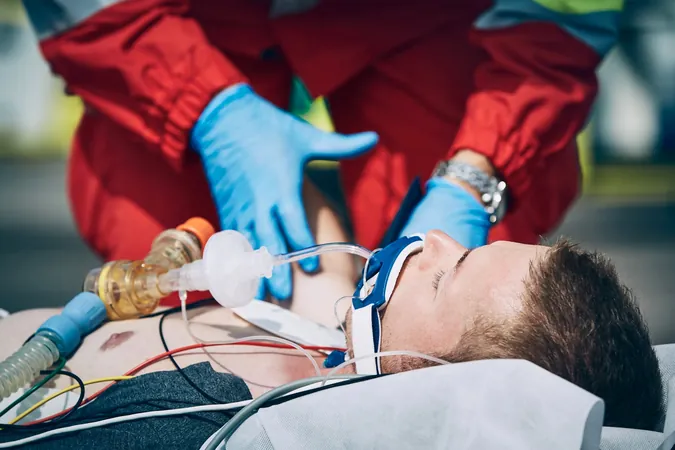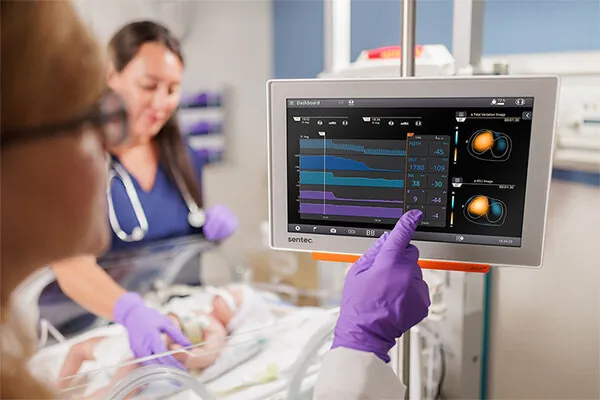
Revolutionary Soft Robot Could Transform Emergency Intubation
2025-09-10
Author: Jia
A Game Changer in Emergency Medicine
In the high-stakes world of emergency medicine, securing an open airway is the ultimate priority. Without oxygen, life-saving interventions falter. Yet, when it comes to endotracheal intubation—essential for managing airways—success hinges on ideal conditions and extensive training. Factors like poor lighting, challenging patient positions, and injuries can diminish even the most skilled medical personnel’s chances of success.
Introducing a Lifesaving Innovation
What if mastering intubation didn’t require years of experience? Researchers at UC Santa Barbara have unveiled a groundbreaking solution: a non-electronic soft robotic device that swiftly and autonomously inserts a soft tube into the trachea. In early tests, highly trained users achieved a remarkable 100% success rate, while prehospital medical providers (EMTs and paramedics) boasted an impressive 96% success rate.
David Haggerty, a recent UC Santa Barbara Ph.D. graduate and researcher in mechanical engineering, stated, "Traditional intubation tools demand extensive anatomical knowledge and skill, often under unfavorable conditions." The usual process involves visualizing the trachea and manually guiding a tube through the complex anatomy of the airway. This becomes considerably trickier outside of hospitals, where conditions are rarely perfect.
How Does It Work?
Conventional intubation faces obstacles baked into human anatomy itself, like the epiglottis, which serves to protect the trachea during swallowing. To make way for the breathing tube, rescuers typically use rigid tools like metal laryngoscopes, pushing them into sensitive tissue—a method fraught with limitations. Hawkes explained, "Traditional tools are too stiff to adequately navigate the intricate anatomy of the airway. They often deflect off delicate tissues instead of smoothly guiding the tube into place."
What's Next?
The UC Santa Barbara team is gearing up for clinical trials, aiming for FDA approval to bring this device into actual use. Haggerty noted, "While our initial data shows promise, we need to thoroughly test safety and effectiveness under diverse conditions—cadavers don’t provide feedback!" If they succeed, this revolutionary device could change the landscape for the millions of emergency intubations performed yearly in the U.S., with applications in military medicine and for underserved global populations.
Meet the Team Behind the Innovation
The success of this project is a collaborative effort, involving experts such as Linus Rydell from UCSB, James R. Cazzoli at Vine Medical, Marvin A. Wayne from Washington’s Whatcom County Emergency Medical Services, and others from prominent institutions like Stanford University and the University of Pittsburgh Medical Center.




 Brasil (PT)
Brasil (PT)
 Canada (EN)
Canada (EN)
 Chile (ES)
Chile (ES)
 Česko (CS)
Česko (CS)
 대한민국 (KO)
대한민국 (KO)
 España (ES)
España (ES)
 France (FR)
France (FR)
 Hong Kong (EN)
Hong Kong (EN)
 Italia (IT)
Italia (IT)
 日本 (JA)
日本 (JA)
 Magyarország (HU)
Magyarország (HU)
 Norge (NO)
Norge (NO)
 Polska (PL)
Polska (PL)
 Schweiz (DE)
Schweiz (DE)
 Singapore (EN)
Singapore (EN)
 Sverige (SV)
Sverige (SV)
 Suomi (FI)
Suomi (FI)
 Türkiye (TR)
Türkiye (TR)
 الإمارات العربية المتحدة (AR)
الإمارات العربية المتحدة (AR)